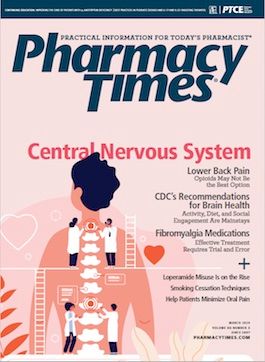Pharmacy Tech Role Keeps Changing
Expanding responsibilities help pharmacists’ daily routines as the profession evolves.
In 1966, Linwood Franklin Tice, who developed a plasma substitute during World War II and later became dean of the Philadelphia College of Pharmacy at the University of the Sciences, said, “[T]he pharmacist’s chief occupation will in time be done by technicians and eventually by automation. The pharmacist of tomorrow will function by reason of what he knows, increasing the efficiency and safety of drug therapy and working as a specialist in his own right.”
As the pharmacist’s role is redefined by state-of-the-art developments in technology, the range of services that they offer has grown in unforeseen ways. Pharmacists now play a much greater role in disease management, health care coaching, medication reconciliation, medication therapy management (MTM), patient immunization, and patient-specific education. In some instances, payers place such an emphasis on the value of the contribution that the services are compensable. These new areas of activity have grown to such an extent that they have become officially acknowledged billing categories. Examples include the pharmacist’s ability to manage an anticoagulation clinic or reimbursement for rendering MTM services.
ADDED RESPONSIBILITIES
As pharmacists assume a greater number of professional roles in providing cognitive services, they must still manage their core obligations, which have always been and should always remain the heart of the practice of pharmacy. Certified, trained pharmacy technicians can help perform many pharmaceutical activities that were previously the responsibility of pharmacists. These activities include assisting in compounding, billing, computer-data input, inventory maintenance, maintaining and optimizing automation, prepackaging, and prescription dispensing. Other new areas of responsibility include providing operational support for immunization centers, running patientcare clinics, supervising other technicians, and techcheck-tech opportunities. Some states, such as Idaho, even permit technicians who have completed proper training to administer immunizations to patients.
The exponential growth of the tech’s enhanced role requires that optimal therapeutic outcomes and patient safety remain priorities. The pharmacist should be involved in the supervision of activities that have been delegated to a tech. The tech should be required to pass a certification exam and maintain such certification before assuming expansive delegated activities. States, through the agency of their respective pharmacy boards, should be clear in their laws and regulations when defining the types of activities in which techs may engage under a pharmacist’s supervision.
Some organizations offer certification for technicians. One is the Pharmacy Technician Certification Board (PTCB), which was established in 1995. Until then, technicians lacked a unified standard for delivering medication safety and patient care. The PTCB changed that. Formed by a collaboration of pharmacy associations and societies across the United States, the PTCB became the first certification organization for techs. It is the only non profit pharmacy credentialing organization in the United States.
Since its founding 25 years ago, the PTCB has developed and updated credentials that reflect best practices in patient care. The commitment of the organization has made its credentials and programs widely accepted for techs across the country. The PTCB’s mission is to advance medication safety by certifying technicians who are qualified to support patient care teams and pharmacists in all practice settings.
States should concentrate on legislative and regulatory reform to continue developing laws related to technicians within the framework of the states’ respective pharmacy practice acts. This may include the mandatory registration of technicians or the recognition of their certification as a means for them to assume greater pharmaceutical responsibilities.
Pharmacy boards might also seek ways to permit expanded tech functions to support pharmacists so that they can deploy into areas of patient care for which they may not have the resources. One example might be permitting techs to engage in barcodeenabled product review in the presence of a pharmacist.
The least we can expect is that pharmacy boards will consider policy initiatives and work with individual state professional associations to draft guidance that will allow the pharmacy profession to continue to move forward. Such initiatives can play a vital role in allowing techs to advance the pharmacy profession by providing effective and safe patient care while supporting pharmacists through daily activity.
Ned Milenkovich, PharmD, JD, is chairman of the health care law practice at Much Shelist, PC, in Chicago, Illinois, and former vice chairman of the Illinois State Board of Pharmacy.

